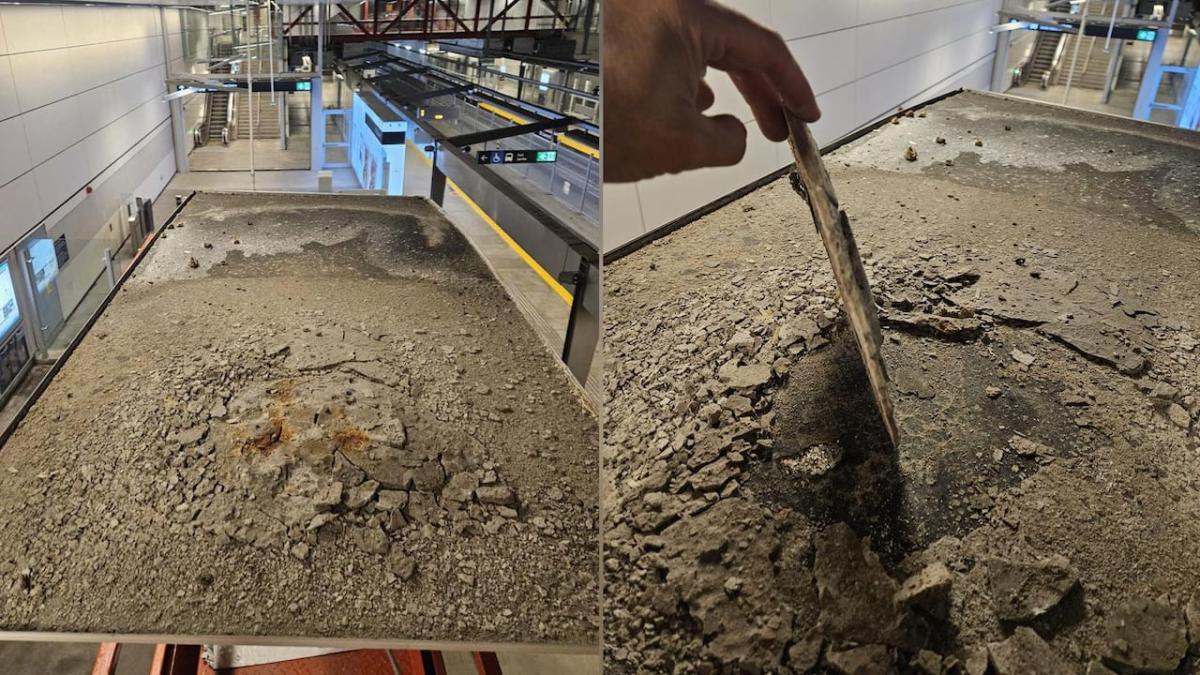Internal emails reveal several City of Ottawa officials were concerned about the stability of the ceiling structure at St-Laurent LRT station, even before discovering in May that some ceiling panels dusted with concrete chunks were being supported by “detached” and “heavily corroded” metal framing, directly above platforms where passengers waited for trains.
CBC News has also learned the ceiling structure wasn’t checked after a “one time inspection” in February 2023, and falling debris was likely putting the public at risk for months before the tiles were pulled down in May.
These details are contained in emails and photos obtained by CBC through a freedom of information request.
St-Laurent station was closed to train service from May 17-22 so those risks could be addressed.
City transit officials initially described the problem as “disrupted” ceiling tiles due to leaks. Later, they found corroding steel rods holding them up. A memo to council stated workers found debris on top of some panels which appeared to be leaked “concrete slurry,” and that water infiltration caused “minor” delamination of the tunnel underside, meaning separation of concrete layers.
But emails suggest some areas on the tunnel ceiling showed delamination “too big (and deep)” to fix with regular equipment. One report also deemed the ceiling framing supports had “structural inadequacy.”
Emails suggest officials were concerned for the safety of those commuting just underneath, describing the issue as a “hazard associated with falling suspended ceiling debris” potentially “striking a member of the public or staff” — and sought engineers to sign off on that risk after fixes.
Of concern is the chunk of concrete found on one tile. – May 17 email from Rideau Transit Maintenance
Before this latest incident, concrete chunks fell from the tunnel onto the LRT tracks in January. CBC News discovered some problem spots labelled “urgent” back in 2020 weren’t patched up until this year, after concrete fell. The city also skipped fully inspecting the tunnel structure when it was due in 2022, citing major construction on the bus station above.
In response to that story, a city spokesperson told CBC News in April that a structural engineer conducted a “comprehensive inspection” and deemed overhead hazards like concrete coming apart as “successfully mitigated.”
But overhead hazards were again discovered just a month later.
The city underscored that the “structure is safe” following the May fixes, and said further rehabilitation work is scheduled for next year.
Early warning signs
City officials and Rideau Transit Maintenance (RTM), the group in charge of maintaining the light rail system, knew as early as May 1 there were issues, according to the emails which date back to early May.
A work order was issued that day after inspectors found a “loose” ceiling tile above the eastbound platform. It requested to “push [the] corner back into place” for the “displaced” panel.
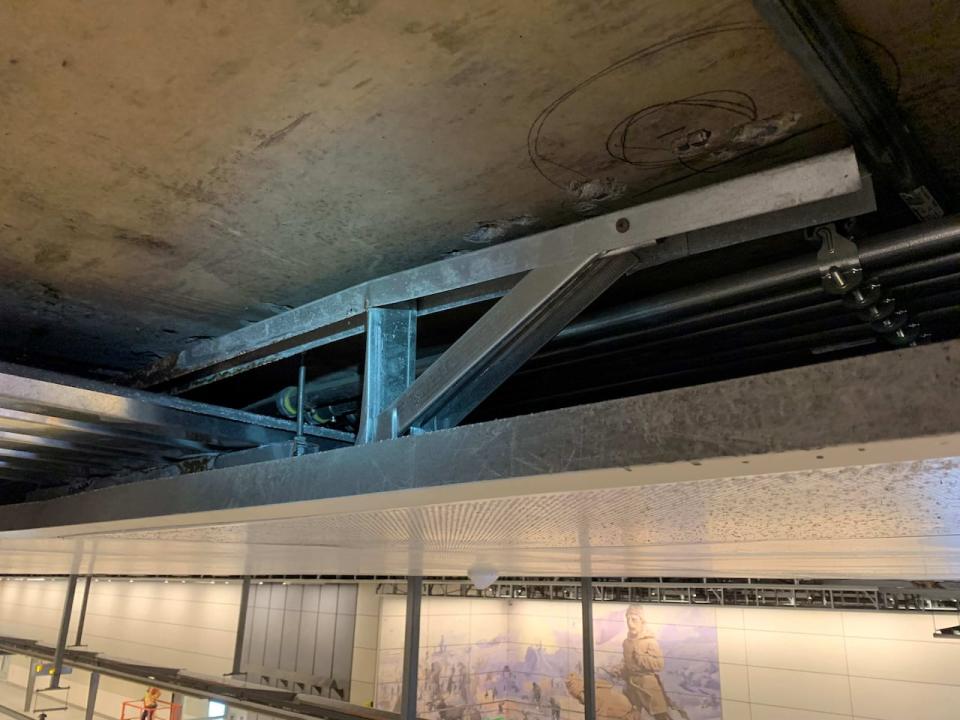
This image was one of dozens shared among city transit and infrastructure staff after inspectors discovered problems with the ceiling structure including a ‘detached ceiling framing member’ in some spots. (City of Ottawa freedom of information request)
It was around this time that RTM decided to implement bi-weekly inspections at St-Laurent station.
Despite three other LRT stations — Parliament, Rideau and Lyon — previously having bi-weekly inspections of suspended ceiling tiles, RTM said it conducted a “one time inspection” of the St-Laurent ceiling in February 2023.
In a May 8 email, RTM explained that while St-Laurent station had the same type of installations as the other stations, it decided not to do regular inspections there because “no loose/fallen ceiling panel issues have been reported.”
RTM noted it would address any observed panel issues to “prevent any damage or injury to person or property.”
(In response to this, the city said each asset has its own inspection regime depending on operations and design elements. It said bi-weekly inspections at certain stations “are unrelated to the ongoing work at St-Laurent station or its general maintenance.”)
RTM did not reply to CBC’s request for comment.
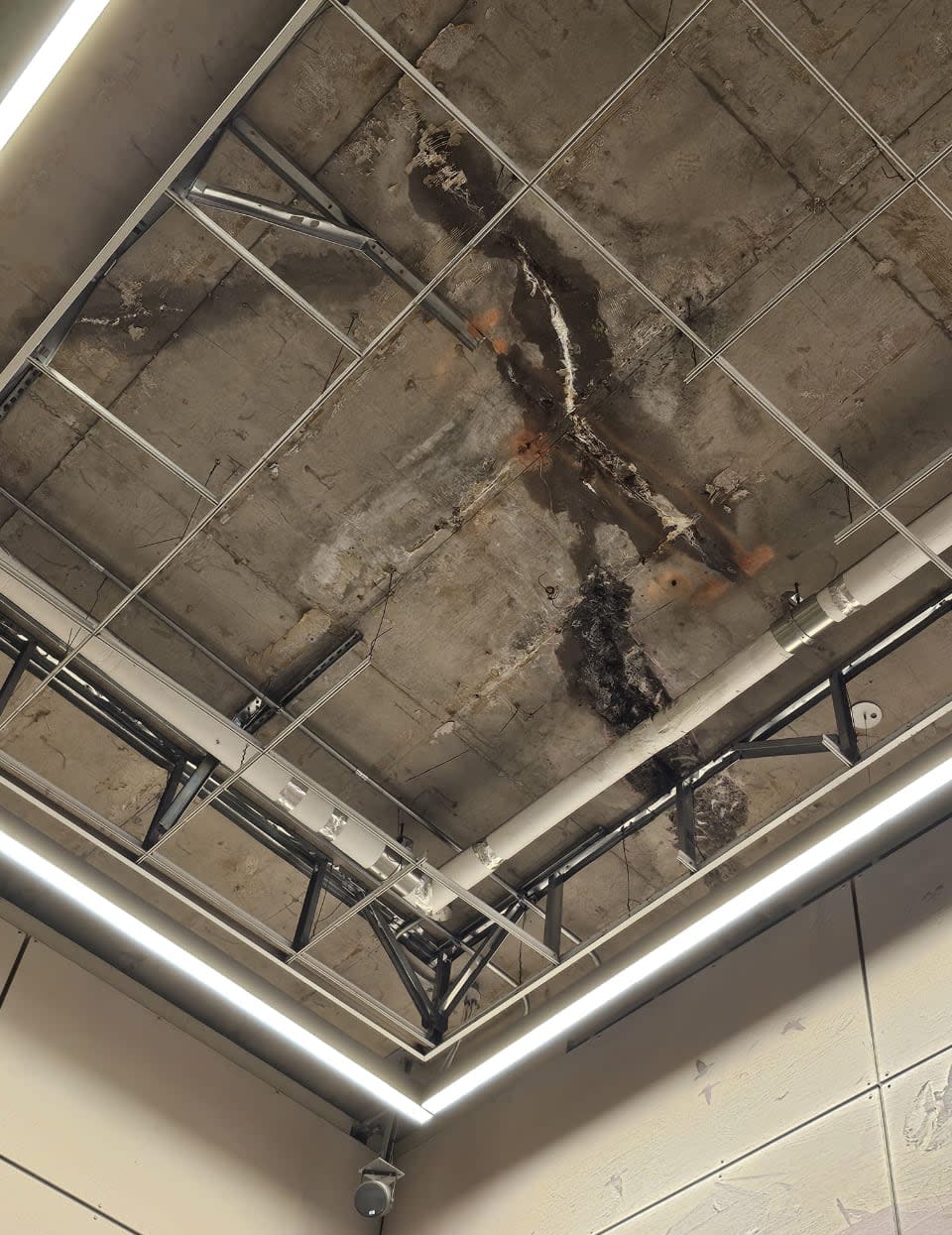

An engineer noted cracks, leaks and other damage to the tunnel’s roof slab after an ‘urgent’ inspection in May. In emails, transit staff also expressed concerns over the ‘ongoing leaks.’ (City of Ottawa freedom of information request)
‘Deep check’ reveals concrete ‘chunk’ atop tile
In an email on the afternoon of May 16 — the day before the station was closed — manager of rail systems Matt Pieters flagged water damage on the ceiling above the tiles to his colleagues.
(This was unrelated to the May 1 work order, Pieters said in a response to CBC Thursday. Rather, this issue was part of a work order on May 14, after staff found water on the platform and water stains on tiles above another location).
“I am concerned about the stability of the structure and raised it as a safety concern this afternoon,” he wrote in the May email. “I showed the pictures … and we all agreed there are concerns about the specific areas that show significant signs of corrosion.”
He said RTM will do a “deep check” later that night when removing another tile “to ensure the structure is safe and if not, they are to make it safe.”
“We are also concerned about the ongoing leaks that don’t seem to have been repaired as part of the expansion work on the upper [bus station] deck,” Pieters added.
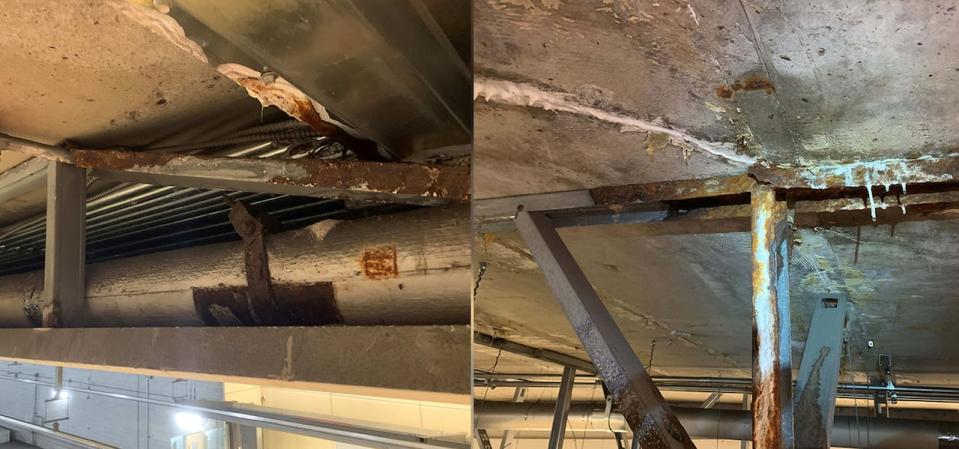

Corroded metal framing supported ceiling tiles above the St-Laurent LRT station platforms. (City of Ottawa freedom of information request)
Later that night and into the early morning of May 17, RTM discovered a problem that appears to have sparked the five-day stoppage of LRT service at the station.
“Tiles in question were removed…. Of concern is the chunk of concrete found on one tile,” wrote an RTM senior operations manager.
The city hired an engineer to perform an “urgent” inspection. He reported finding several spots above both platforms where concrete and other debris had fallen onto ceiling panels.
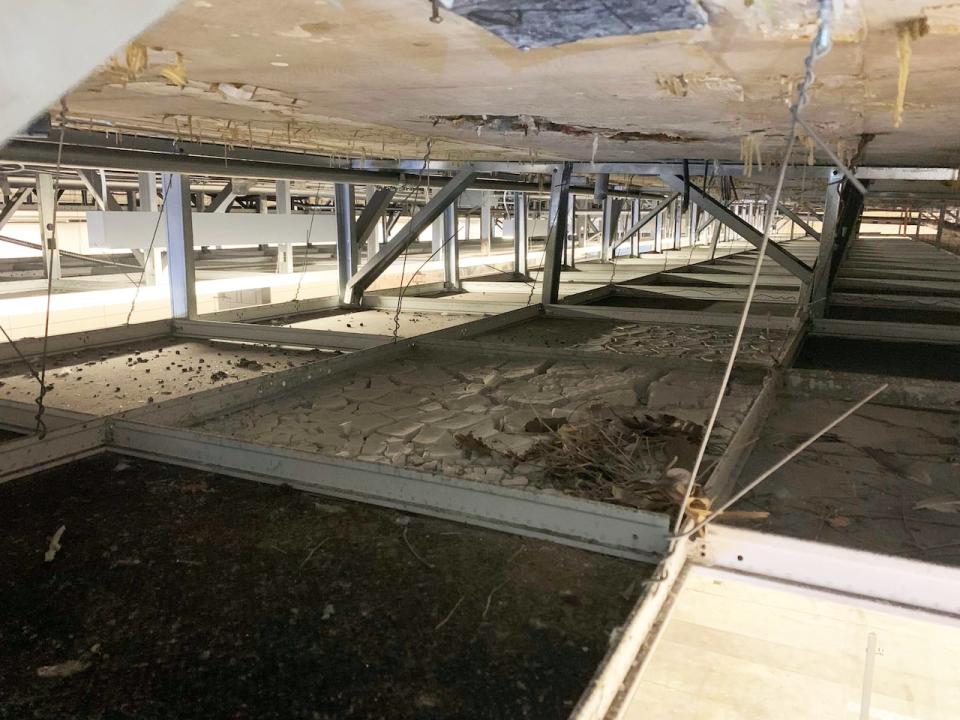

A photo contained in emails shared among city staff shows suspended panels covered in what appears to be concrete debris. The slab above also appears to show signs of delamination, or separation of concrete. (City of Ottawa freedom of information request)
The engineer believed the concrete debris was “hardened cement slurry which leaked” through embedded boxes in the tunnel concrete.
In an earlier email he said it “most likely” happened during the bus platform construction which began in 2022 and wrapped up this past December — meaning concrete was likely sitting atop some tiles for at least five months.
‘Detached’ frames showed ‘severe’ corrosion
According to the engineer’s report, ceiling tiles with concrete pieces were also being held up by corroding pipes and framing in some areas, some of which were described as “detached” with “severe” and “heavily corroded metal framing.”
Another engineer’s report said the ceiling support system was in “fair-poor condition resulting in structural inadequacy.”
In fact, just hours before reopening the station to the public on May 22, city officials were told of a surprise discovery: a “piece of ceiling frame dangling” over the platform edge. They noted it as a “safety hazard.”
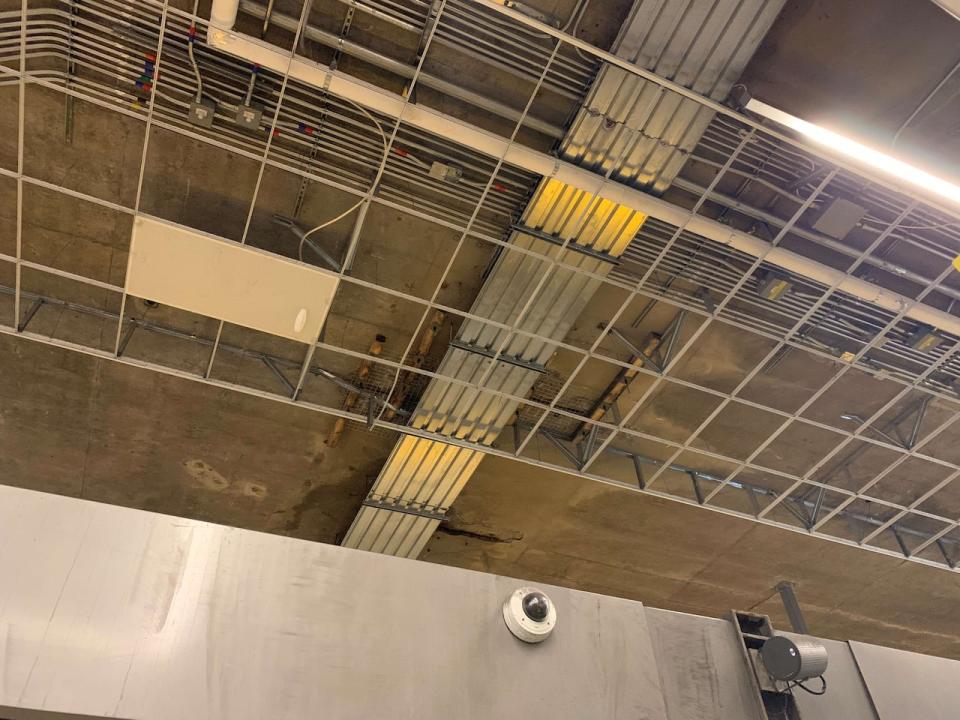

Just before 3 a.m. on May 22, the day the St-Laurent LRT station was slated to reopen, an engineer forwarded a photo to city staff flagging a ‘dangling’ piece of metal frame as a safety hazard. (City of Ottawa freedom of information request)
That dangling metal was near one of three areas where workers placed temporary wire mesh over some “deep” delamination.
“We’ve scaled ‘loose concrete’ but there are delaminated areas that present some risk but are too big (and deep) to remove,” a staff member explained in an email to officials on May 21.
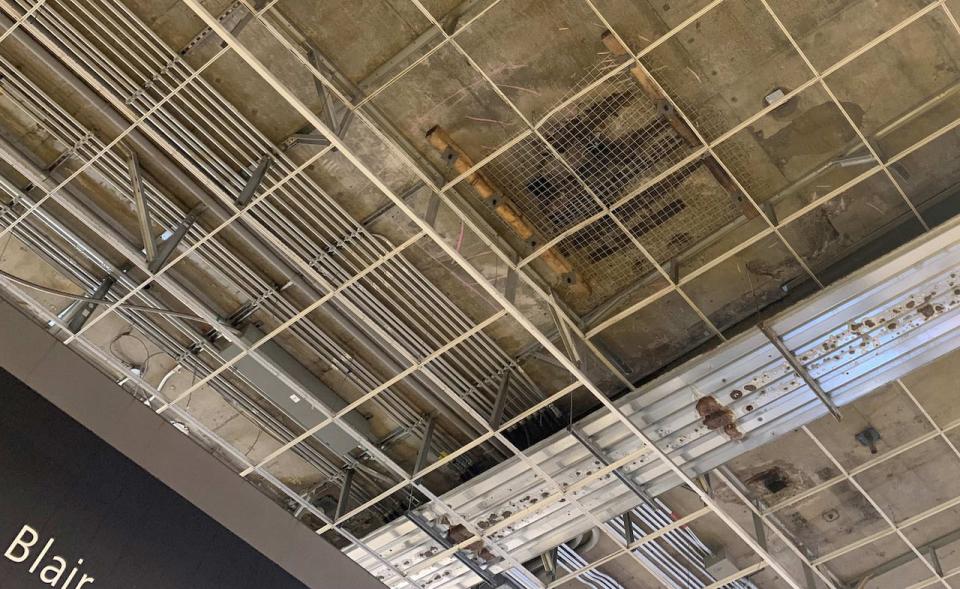

This is one of the spots temporarily protected by wire mesh in May. Internal emails reveal these delaminated areas ‘present some risk but are too big (and deep) to remove’ with regular tools. (City of Ottawa freedom of information request)
After reviewing some documents shared by CBC, Coun. Wilson Lo said the situation appears “more severe than as described initially.”
Lo, a member of the transit commission, said he’s concerned it appears the latest issues were “hidden by the ceiling panels” and have gone “undetected for a while.”
“I’m glad the ceiling tiles were there to catch it [the debris], of course, but the fact that it’s happening is uncomfortable to learn,” Lo said.
In response to the lack of regular inspections, Lo said that was “incredibly irresponsible.”
“And I would really want to find out who made such a call.”
Provincially mandated inspection underway
Ontario’s Ministry of Transportation (MTO) requires tunnel inspections every two years under its Ontario Structure Inspection Manual (OSIM). The city deferred the full OSIM inspection scheduled for 2022 due to the major construction.
In the days following the shutdown in May, it appears officials looked to “expedite” and “prioritize” the OSIM, according to emails.
The city declined CBC’s request for an interview.
In an emailed statement, the city’s infrastructure and asset management director Susan Johns said the OSIM inspections “are underway” and will be finished in 2024.
She wrote that since May, the city has made progress including working on plans to fix water infiltration and continuing to monitor the concrete structure.
“There are no requirements to expedite any work,” she said. “Any rehabilitation work identified through this work is planned for 2025.”
Pieters reiterated the station “continues to be safe” for commuters and staff.

